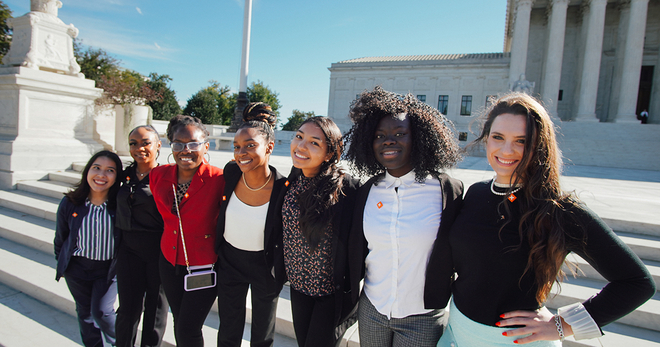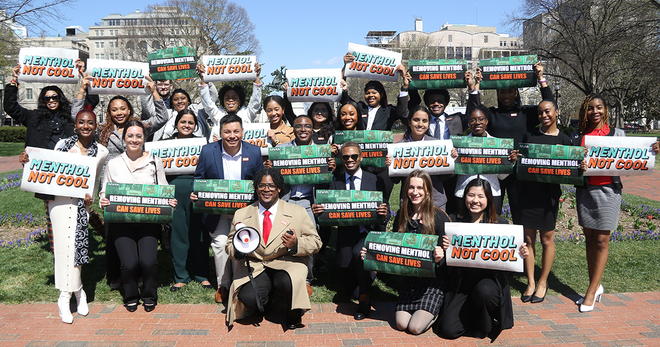An end to commercial tobacco use? Public health experts weigh in
The “endgame” strategy to move toward the end of commercial tobacco and nicotine use, except medications approved by the Food and Drug Administration, is gaining momentum among U.S. public health experts, policymakers, and the general public.
Recent Centers for Disease Control data showed that more than 57.3% of adults supported a policy eliminating the sale of all tobacco products. More than 120 localities have ended all flavored tobacco sales within their borders, and several states including California, Minnesota, and Massachusetts have moved to adopt endgame strategies. They follow the example of countries like New Zealand, which will begin enacting the very first set of country-wide endgame policies, including preventing tobacco sales to anyone born in or after 2009.

“The policies will end the devastation of addiction and they will create freedoms,” said Dr. Janet Hoek, a professor of public health at the University of Otago, Wellington in New Zealand, about her country’s new legislation. She and other public health experts discussed the potential of endgame strategies during the latest Truth Initiative Impact Series “Gamechanger: Shifting from Tobacco Control to Ending the Industry’s Influence for Good.”
Truth Initiative published a report of the same name that details what an endgame strategy in the U.S. could look like and why it is needed. Endgame policies are not prohibition policies, as they do not call for immediate or near-term prohibition of all commercial tobacco product sales nor are they directed against individuals who use tobacco. They are a set of near-, medium-, and long-term strategies aimed at manufacturers, distributers, and retailers and do not target or criminalize consumer use or purchase.
In addition to Dr. Hoek, “Gamechanger” featured Robin Koval, CEO and President at Truth Initiative; Stacey Younger Gagosian, Vice President, Public Policy at Truth Initiative; Natasha Phelps, Director of Equity-Centered Policy at The Center for Black Health and Equity; Eric Lindblom, Senior Scholar at Georgetown Law’s O’Neill Institute for National and Global Health Law; Chris Bostic, Policy Director at Action on Smoking and Health; and Mark Gottlieb, Executive Director of the Public Health Advocacy Institute at Northeastern University School of Law. Dr. Ruth Malone, editor-in-chief of the journal Tobacco Control, moderated.
Many different policies are needed to achieve endgame
California is ahead of many states on the road to a tobacco-free future. A Tobacco-Free Generation bill like New Zealand’s has been introduced in the state legislature, and two California cities have already taken the step of prohibiting sales of all tobacco and nicotine products within their jurisdictions. At least five additional jurisdictions are currently considering such a policy.
“The advantage of doing this at local levels first, where that is possible,” said Dr. Malone, “is that you really do get the chance to learn from your early adopters about what works.”
The End Commercial Tobacco campaign, led by the California Department of Health, has classified the state’s jurisdictions into two groups: the “trailblazers” and the “pathfinders.” The former are cities and counties that already have a low prevalence of tobacco use and also strong tobacco restrictions in place, and therefore can move toward eliminating all tobacco sales. The latter are cities and counties that still have a relatively high prevalence and need tobacco restrictions to be enacted, so they can eventually become “trailblazers.”
Chris Bostic of Action on Smoking and Health highlighted the importance of California’s investment in an endgame strategy – so invested that it recently changed the name of its program focused on tobacco prevention and cessation. “Until about a month ago,” he said, “it was the ‘California Tobacco Control Program,’ but they had decided to get rid of that word ‘control.’ And having a government agency do that speaks loudly about where we’re going.” The name is now the California Tobacco Prevention Program.
Although California provides a road map of how to achieve endgame, there is no solution that will fit every location nationwide. A coordinated approach that includes many different policies is needed to reduce the access, appeal, and addictiveness of tobacco products.
“There is no single policy that’s going to work,” underscored Stacey Gagosian. “And communities are going to be in different places along this journey. But it’s really important that they be on the journey, wherever they are.”
A tobacco-free future is possible, endgame is possible
Claims of prohibition, criminalizing use and possession are false
Despite its claims that it can be part of the “public health solution” to end smoking, the tobacco industry continues to sell products to put people at risk for nicotine addiction and prolong its market in the U.S. and around the world. The industry also continues to act to delay and prevent the adoption of proven strategies to end tobacco and nicotine use. This includes the claim that an endgame strategy would return us to the time of 1920s alcohol prohibition and illicit markets.
“But we know that kind of illicit trade, much less violent illicit trade, just isn’t going to happen,” said Eric Lindblom of Georgetown Law’s O’Neill Institute for National and Global Health Law. Researchers have concluded that the likelihood of an illicit market would be relatively small, particularly if cessation services are increased and other safeguards are put into place. Unlike alcohol prohibition, policies in favor of ending tobacco are not intended to criminalize use or possession.
Still, the tobacco industry has attempted to spread fear that policies that eliminate the sale of menthol cigarettes unfairly target African Americans and would lead to further criminalization of the community. Menthol has been repeatedly exempted from legislation on flavored tobacco products, the result of massive tobacco industry lobbying efforts that have included making strategic financial contributions and working to align itself with black leaders and politicians. R.J. Reynolds, the maker of the leading menthol cigarette brand Newport, recruited prominent Black leaders, including civil rights activist Rev. Al Sharpton, to host town halls across the country on the subject.
“In our experience, once communities are aware of that type of relationship, they see what it is,” said Natasha Phelps of The Center for Black Health and Equity. “It’s not that people are aware and don’t care. I think it’s that people aren’t aware of the tobacco industry and their strategies and their appropriation of culture.”
The tobacco industry has always labeled tobacco taxes, flavored restrictions, and policies that remove nicotine as “prohibition,” but in none of those cases is that true. Tobacco products still remain on the market under each of those policies, but they are more expensive, less appealing, and less addictive – all of which can deter young people and people who have not used tobacco and nicotine from trying such products and encourage people who currently use tobacco or nicotine to quit. Done properly, a comprehensive collection of endgame policies will instead make tobacco something that people simply do not want.
“The rhetoric around ‘prohibition’ is very powerful,” said Mark Gottlieb, “and it’s something we all have to reckon with. It was the main reason why health advocates, up until recently, were afraid to even consider endgame strategies.”
The rhetoric is an industry tactic to distract from the health benefits of society moving away from tobacco and nicotine use. That’s why it is important that the public health community educate policymakers, the public, and people who use tobacco and nicotine about what endgame is and what it isn’t.
“A tobacco-free future is possible, endgame is possible,” said Robin Koval. “It starts with all of us and the circle of people that we all know and interact with every day, and then making it larger… changing the way we talk about the tobacco issue, and believing that it’s possible.”
Truth Initiative’s Impact Series
The Truth Initiative Impact Series is a robust, recurring event that brings together key stakeholders and experts to engage in thought-provoking conversations about ways we can innovate and inspire action to achieve a culture where young people reject smoking, vaping, and nicotine. The goal of this thought leadership series is to convene diverse partners in tobacco control and other public health organizations, parents, teachers, and policy makers who can benefit from Truth Initiative’s work.
In case you missed it, watch our previous Impact Series events: “Tobacco-Free Screens: Changing the Picture on the Tobacco Industry’s Influence in Popular Entertainment,” “A Conversation with FDA’s Center for Tobacco Products Director Dr. Brian King and Truth Initiative CEO Robin Koval,” “Undermining Scientific Integrity: The Tobacco Industry’s Renewed Attack on Research and Reality,” “Nicotine Nation: How the Tobacco Industry May Be Addicting a New Generation and is Keeping Americans Hooked,” “Vaping: Know the Truth – Empowering Students with the Facts on E-cigarettes & Tools to Quit,” “Thrive: A Youth Mental-Health Summit,” “Unvaping America’s Youth,” and “Not Buying It: The Tobacco Industry’s Rebrand.”
More in tobacco prevention efforts
Want support quitting? Join EX Program
By clicking JOIN, you agree to the Terms, Text Message Terms and Privacy Policy.
Msg&Data rates may apply; msgs are automated.



